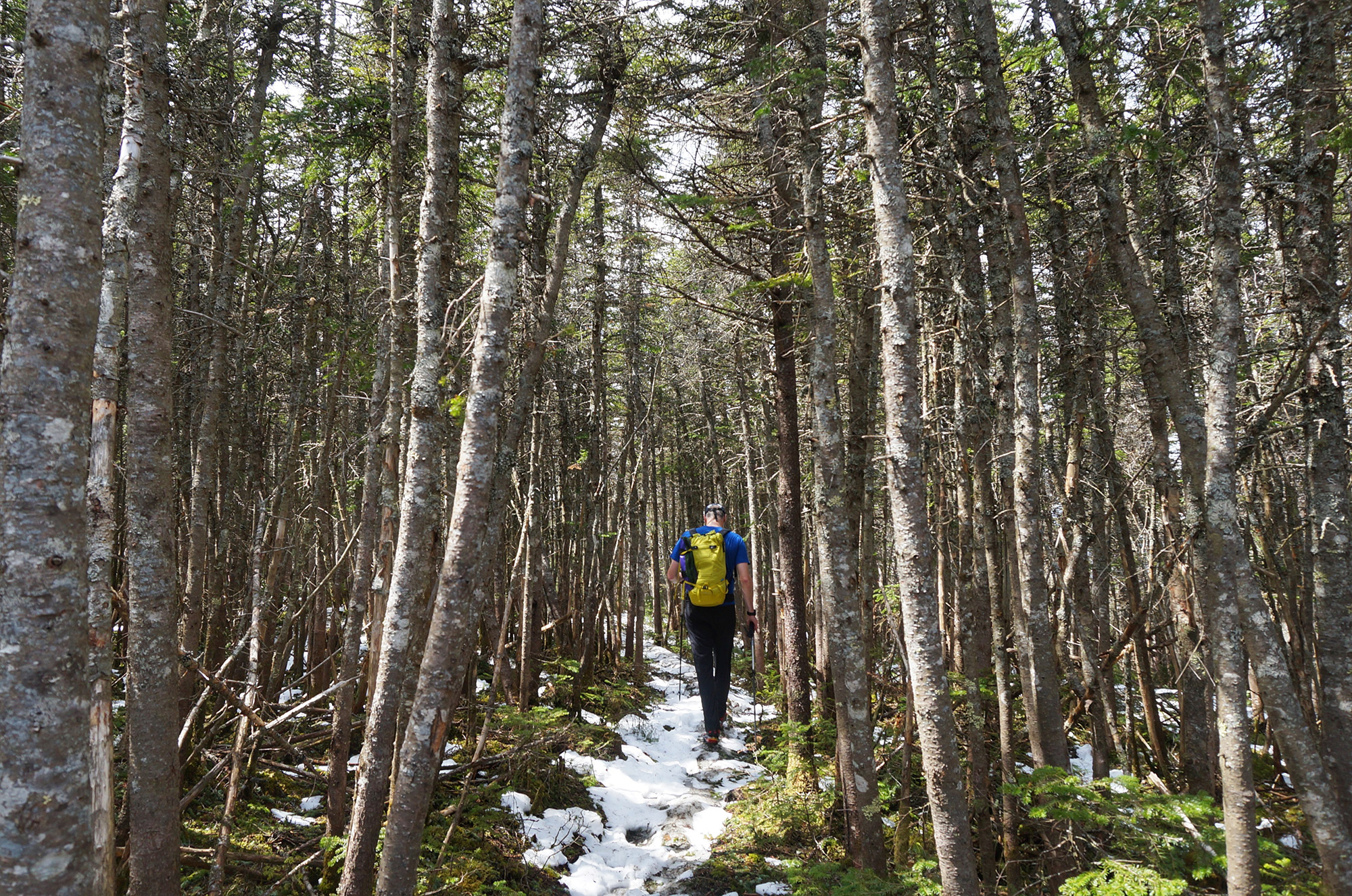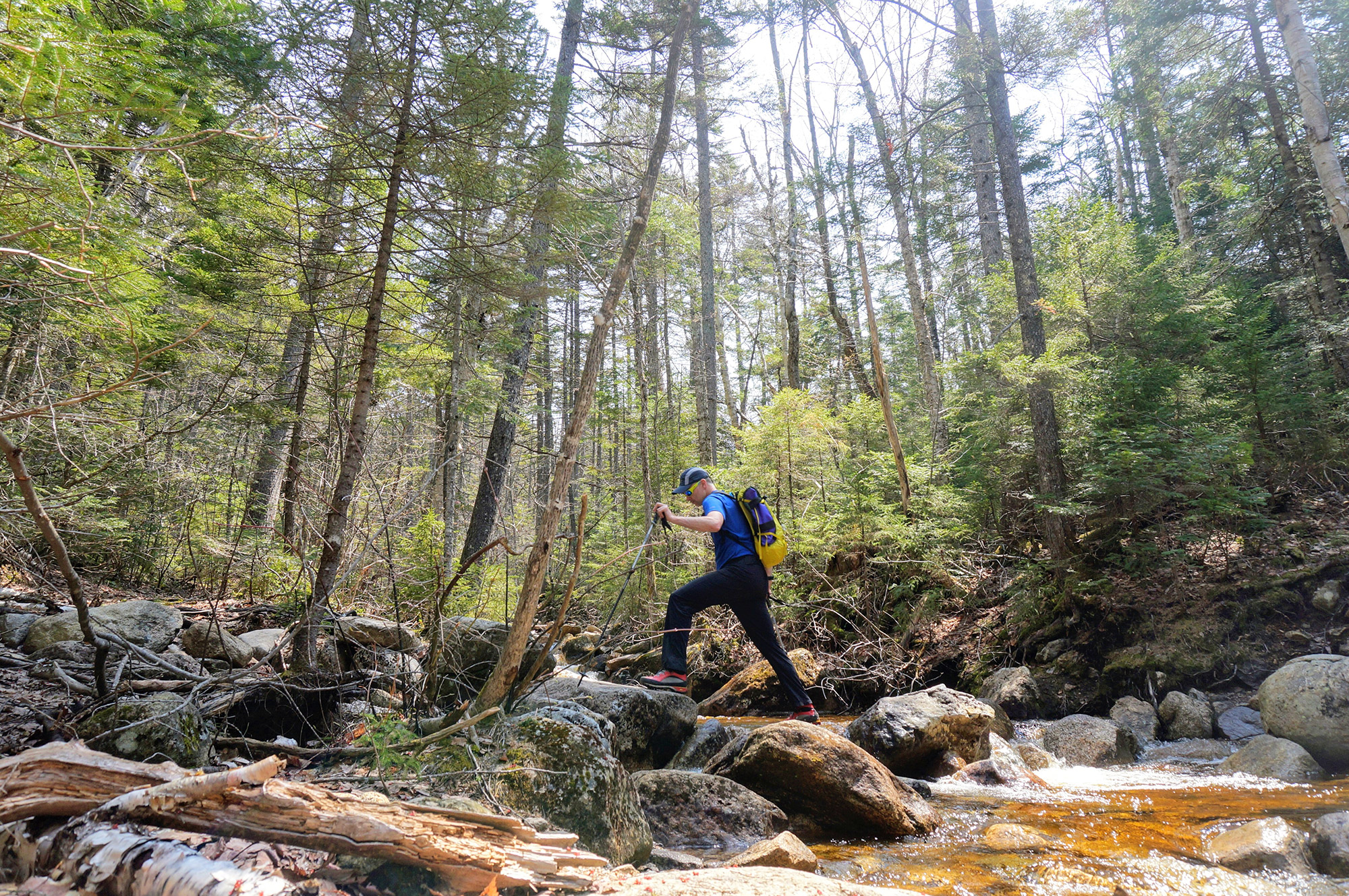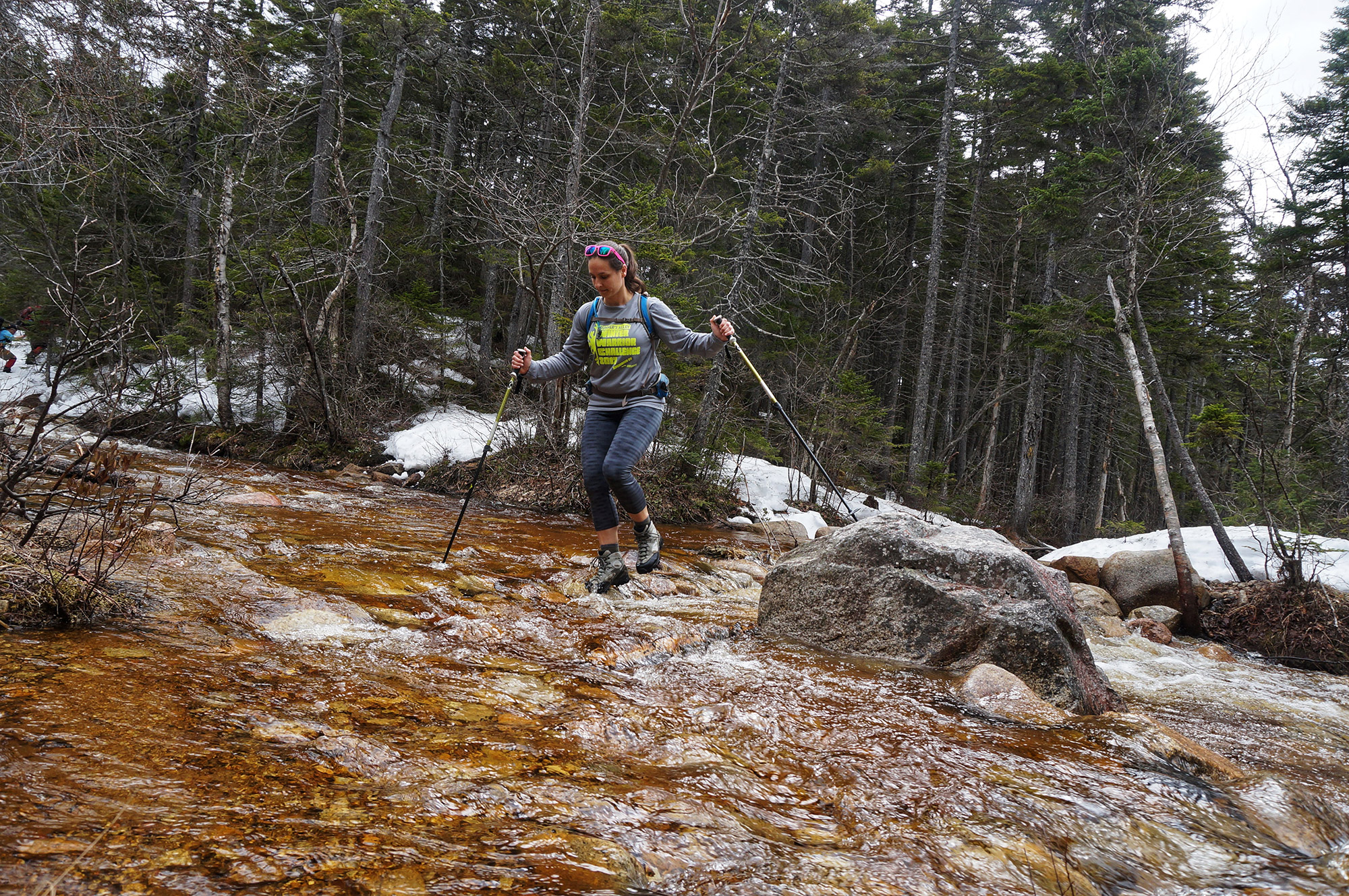April Fool’s Day is a time best known for pranks and jokes. It’s also a time of tricky conditions in the mountains as winter gives way to spring. Mud, ice, snow, unexpected weather, high rivers and more can all add challenges to spring hiking that we don’t see year-round. Keep reading to avoid being the joker who gets caught unprepared hiking this spring.
1. Lighthearted Layering
Don’t get the wool pulled over your eyes by the warm weather in the parking lot. Instead, be prepared to add layers to your body as the early spring weather in the high mountains rarely aligns with the warm, sunny conditions you had down low. Wide-ranging weather is common this time of year and often a hike that starts in short sleeves will end in a heavy puffy coat.
2. Footwear Folly
Trail runners might seem like a good idea at the car but could be closer to clown shoes up in the alpine. The additional height of hiking boots keeps snow from scheming against you and sneaking in the top of your shoe. Even better, waterproof footwear keeps you from being bamboozled by wet feet while providing a little extra warmth.

3. Not-So-Silly Snow
The absence of snow at the trailhead is a common hoax this time of year, tricking hikers into leaving their snowshoes behind. Colder temperatures, more snowfall, and hiker traffic packing down snow on trails can cause it to linger at higher elevations throughout the spring—making snowshoes necessary to avoid being duped into post-holing through unexpected snow.
4. Traction Tomfoolery
Melting snow, spring rain, warm days, and cold nights all conspire to make mischievously icy trails. Pack a pair of traction devices for navigating this tricky terrain and to avoid senseless slipping.
5. Muddy Monkey Business
Trying to avoid mud in the spring is a fool’s errand in the Northeast. When you encounter mud while hiking, either stick to hard surfaces to avoid it or walk through it, as walking around it on soft surfaces widens the trail, damages the delicate ground, and leaves behind a long-term record of your mischievous misbehavior.

6. Worrying Water Crossings
Snowmelt and spring rains increase runoff, swelling mountain streams and rivers, making otherwise benign water crossings deceptively difficult. No laughing matter, take the time to find the best place—i.e., where the water is shallow and slow-moving, or where rocks protruding above the water’s surface form a natural bridge—even if it means spending a few extra minutes searching up and downstream.
7. Trekking Pole Trick
Carrying trekking poles is an easy way to avoid being the butt of the joke when it comes to mud, ice, and water crossings. There are so many reasons to use trekking poles, including that they let you probe mud and water depth, and help increase balance and stability while making tough crossings and moves on slippery rock.

8. Deceived by the Dark
The days are still short this time of year, heightening the risk of getting benighted. Don’t get hoodwinked and hike without a headlamp; Hiking in the dark is a punchline no one wants to hear.
9. Wait for a Less Foolish Day
Sometimes the conditions just don’t line up—treacherous water crossings, too-slushy snow, and unstable weather are just a few pranksters that can disrupt even the best-laid plans. If things don’t look right, consider picking a different objective or call it a day early.
10. Whacky Weather
It’s undeniable that spring is known for its comically inconsistent conditions. One way to avoid being a victim of this practical joker is by checking conditions. In New Hampshire, the high summits forecast from the Mount Washington Observatory is a great resource for gaining info on expected weather while websites like New England Trail Conditions use community-based reporting to deliver up-to-date trail conditions.
Have a spring hiking tip that’s kept you from playing the fool? If so, we want to hear about! Leave it in the comments below.

Tim Peck and Doug Martland
Tim and Doug met long ago at the Eastern Mountain Sports in Canton, Massachusetts. Bonding over a love of slick Quincy Quarry granite, White Mountain sufferfests, and scheming up adventures while folding tee-shirts, today Tim and Doug collaborate to write about their favorite outdoor activities and occasionally get nostalgic about tee-shirt tables.
Related Posts
April 2, 2024
10 Tips for Mountain Biking Etiquette During Mud Season
One rough spring could ruin the…




